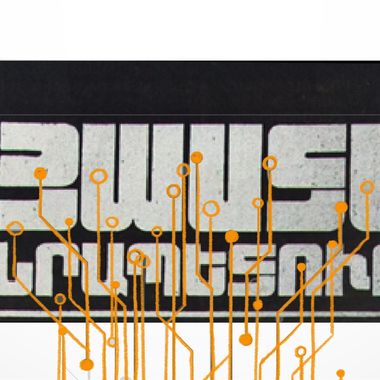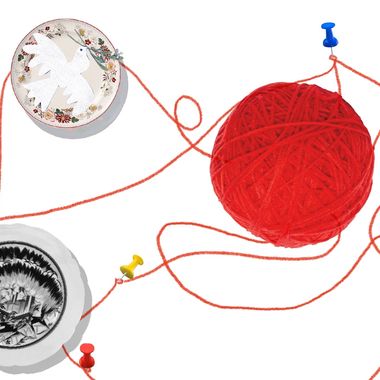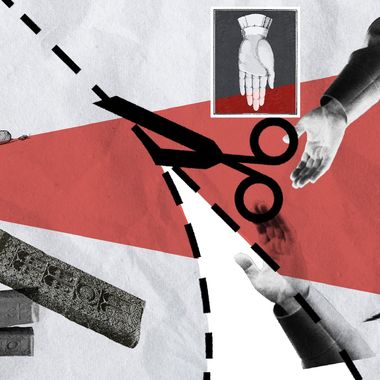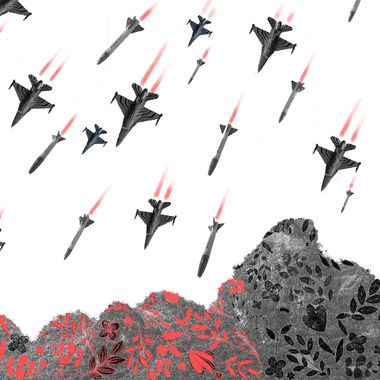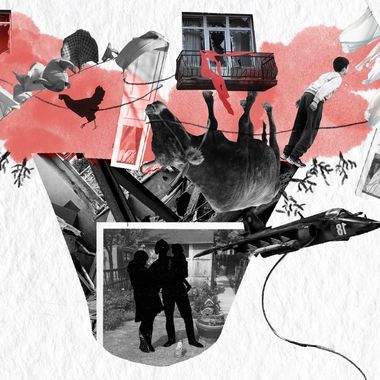Fri Jan 08 2021 · 9 min read
Postmortem of a Catastrophe
Seeking Accountability and Answers for the 2020 Artsakh War

By Nerses Kopalyan
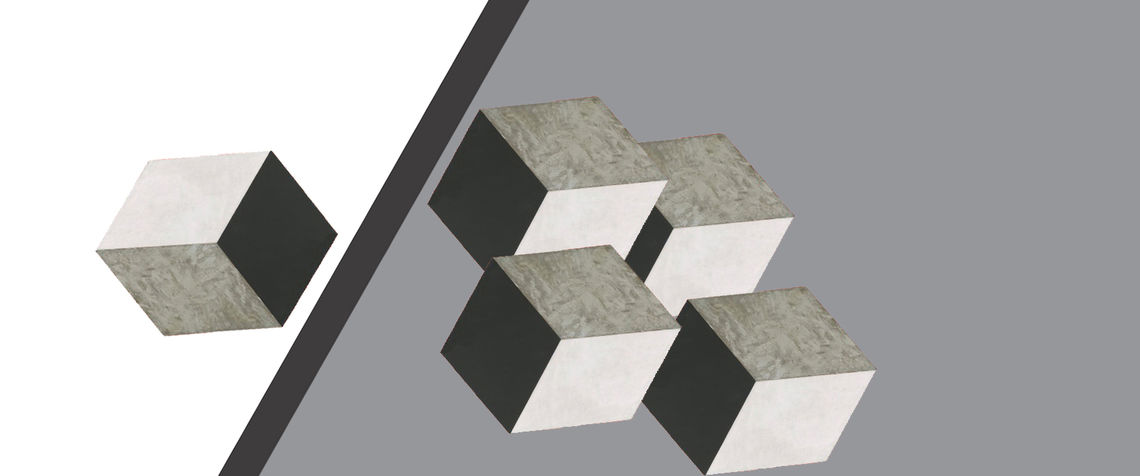
The scope and depth of the crisis created by the 2020 Artsakh War has shattered the broad-ranging perceptions, myths, and illusions that had perpetuated the ideational status quo of the Armenian nation. The wounded pride of an intensely nationalistic people has given way to deep soul searching, an earnest frustration with how things culminated in such a catalysmic outcome, and the demand for concrete answers and accountability. The strategic, institutional, diplomatic, political, and policy failures that were crystalized in the suffocating causatum of this war did not happen in a vacuum. This was rather the culmination of three decades of underdevelopment, stagnation, mismanagement, and systemic corruption. This was, in essence, a continuous and collective failure in military and political leadership, one which encompasses everyone and exonerates no one. Responsibility, therefore, will not be gauged so much through a hierarchy of accountability, but rather, through a continuum of accountability. The continuum, temporally, must begin with the current leadership and methodically expand to the three preceding Administrations.
The proposal here is for the formation of a Truth Commission on the 2020 Artsakh War. Armenia’s state institutions, and collectively its entire society, cannot rectify the persistent and systemic errors that led to such military and geopolitical failures without diagnosing, articulating and understanding these errors. The Armenian realm demands answers, the Armenian citizen demands accountability and Armenia’s history and posterity demand the truth.
Truth Commission
Truth commissions are official, ad-hoc, non-judicial fact-finding bodies that investigate patterns of political and systemic failures, abuses of power over long periods of time, or context-specific investigations into national tragedies. Truth commissions are truth-revealing approaches that report the facts of the findings and offer recommendations. Truth commissions have been demonstrated to be highly effective as both instruments of conflict-resolution as well as facilitating social healing.[1] Truth commissions foster accountability, identify systemic problems, document violations, provide transparency, and offer a platform for public exposure and discussion of its findings. The body of literature on the subject matter demonstrates that truth commissions are essential for justice and accountability in developing democracies, especially as the given country confronts catastrophic outcomes and espouses to consolidate the democratization process.[2]
The policy recommendation on how Armenia should commence in developing a robust[3] Truth Commission on the 2020 Artsakh War (hereafter referred to as “Commission”) is based on two primary measures: a precise composition of the Commission and subsequent institutional reforms. Considering the fact that the Nagorno-Karabakh issue has been intrinsic to every facet of Armenian society, from state-building to institutional development to policy formulation to identity construction, this very issue became the lens through which almost every other important issue was shaped or developed. In this context, the Karabakh issue is a 26 year phenomenon, and the state’s continuous stewardship of this issue lies at the very heart of understanding the causal basis of what went wrong, when did it go wrong, why did it go wrong, and how it went wrong. More prescient and concrete questions that the Commission may seek answers for are as follows:
-
What accounts for the failures and limitations in Armenia’s negotiation strategies through four Administrations, and why did Armenia’s negotiating position diminish and methodically weaken through time?
-
Why did three decades of leadership fail to adjust, adapt, and confront the changing geopolitical configurations, thus leaving Armenia in the weakest geopolitical position within the South Caucasus?
-
Why was Armenia’s attempt at military modernization inherently deficient, and why did Armenia neglect to sufficiently address the immense gap in the arms race with Azerbaijan?
-
What were the limitations and failures of Armenia’s military doctrine, its security architecture, and its military capabilities?
-
Why was there a disconnect between society’s perceptions of its military capabilities, the state’s reinforcement of such misconceptions, and the actual state of Armenia’s military capabilities?
-
To what extent did decades of corruption, nepotism, and mismanagement in the armed forces create systemic and chronic shortcomings that detrimentally affected Armenia’s national security and its performance during war?
-
What were the limitations in Armenia’s mobilization system, chain of command infrastructure, and strategic operations?
These points of inquiry are by no means exhaustive, but they do provide an important starting point in attempting to understand the military and political failures that were brought to light by the 2020 Artsakh War.
Composing a Truth Commission
Empirical findings from a cross-national model of 76 transitional countries demonstrates that adoption of robust truth and reconciliation commissions contribute, both in the immediate and cumulatively, to domestic stability, democratic strengthening, and decline in political violence.[4] Best practices for the formation of truth commissions stipulate an inclusive approach, which includes the involvement of various social groups, outside experts, and pertinent stakeholders, with the process being undertaken through the legal implementation of the legislature. In this context, truth commissions that are formed by executive decree do not have the same degree of legitimacy, or social approval, as those formed by an inclusive process. To this end, and with respect to Armenia, the formation of a Truth Commission on the 2020 Artsakh War should not include the involvement of the Prime Minister (executive). With respect to the ultimate purpose of a truth commission, the underlying understanding is that the Commission’s goal is to collect and document information, to reveal past and current systemic errors and wrongdoings, to ascertain eyewitness testimony, to gather evidence, and to reveal to Armenian society, in a transparent and non-politicized fashion, the facts of the findings. The purpose of a truth commission, in doing all this, is to attain societal reconciliation by providing answers and offering recommendations for institutional reforms. Further, while accountability is an inherent part of the process, it is important to note that the ultimate purpose of a truth commission is not punishment or retribution.
What will the Truth Commission on the 2020 Artsakh War look like and how will it be formed? Utilizing the expansive literature on the subject matter, as well as the large body of case studies, best practices, and statistical data available, the following recommendation is proposed.
1- Statutory law passed by the National Assembly on the formation of a truth commission, the composition of this truth commission, its legal boundaries, its responsibilities, parameters specifying its activities, its overall mandate, and a timeline for the completion of its report.
2- The formation of the Commission would entail the involvement of vetted military officials, vetted officials from other pertinent state institutions, domestic non-government officials (NGOs), civic society members, domestic and Diasporan experts, journalists, and international experts as informal advisors/observers.
3- Mandate of the Commission should be relatively comprehensive, and at the minimum, grant the Commission power to offer individualized amnesty, to search premises and seize evidence, to subpoena witnesses, and to hold subpoenaed witnesses in contempt if necessary.
4- Commission should borrow the empirical evidence from successful truth commissions and be structured through interconnected subcommittees. Subcommittees must be subject-specific and investigate a specific facet of the broader mandate. For example, a subcommittee of experts investigating three decades of the negotiating process will present their findings accordingly, while a subcommittee of experts investigating flaws in Armenia’s military doctrine, or one investigating failures in mobilization, or one investigating corruption and abuse of power, etc., will all follow the same procedural format. Each subcommittee will be operationally led by a commissioner.
5- The functional organization of the Commission is recommended to be operationally based on an Executive Committee. Each commissioner of the respective subcommittee will sit on the Executive Committee. The Executive Committee will be chaired by the Chair of the Commission.
6- The Chair of the Commission should have symbolic powers, guiding and advising the committees, and providing public legitimacy to the proceedings. The Chair must be recommended by the Parliamentary ad-hoc committee, after extensive vetting, and approved by a vote of Parliament.
7- Selection of subcommittee commissioners and Commission staff, based on recommended best practices, must incorporate the following: a) an Independent Selection Panel (ISP) comprised of experts must be formed to consider and recommend candidates (composition of ISP must be inclusive of civic society, human rights groups, NGOs, journalists, and academics); b) candidates recommended by the ISP must be vetted and interviewed for qualification and impartiality by the ad hoc Parliamentary sub-committee; and c) the final list of recommendations by the ad hoc parliamentary sub-committee will be brought to a floor vote in Parliament for approval.
Mandate and Investigative/Fact-Finding Scope of the Commission
Successful truth commissions have a track record of being granted expansive mandates, which provides the commission the necessary legal tools and investigative instruments to undertake a broad-ranging fact-finding mission. Considering the institutional complicacy of the Armenian Army, as well as the perception in Armenia’s political culture that the Army sacrosanct, the scope of the mandate must be cognizant of this multitiered complexity, for the Commission would need to potentially deal with both institutional pushback as well as public opinion. Further, considering the fact that the Army is one institution of the state’s security apparatus, the mandate must also provide the Commission selective discretion in accessing and expanding its investigation into interconnected institutions, such as the National Security Service. Recommended investigatory areas, operational procedures, and mandate parameters for the Truth Commission on the 2020 Artsakh War must include, at the minimum, the following:
1- A mandate that allows a) testimony, evidence, and revelations of dereliction of duty, negligence, malfeasance, corruption, and abuse of authority; b) inquiry into the military and diplomatic policies and practices of the previous governments, including an investigation into the practices of the Ter-Petrosyan, Kocharyan, Sargsyan and Pashinyan Administrations; c) testimony, evidence, and revelation of systematized political, social, economic, and psychosocial repression within the Armenian Armed Forces and the institutions of the security apparatus.
2- The Commission must work, function, and hold hearings that are fully publicized, providing the Armenian public complete and unfettered access to the accumulation of testimonies, evidence, and revelations uncovered by the Commission.
3- The Commission must be granted the power of subpoena, requesting the testimony of former and current government officials, lawmakers, and/or other parties associated with the matter under the Commission’s inquiry.
4- The Commission’s mandate must grant the power to search and seize, as well as ascertain relevant and pertinent evidence.
5- The Commission shall be granted the authority to offer amnesty in exchange for testimony.[5] The scope of amnesty must be specified within the mandate of the Commission determined by Parliament.
6- Through selective declassification, the Commission must be granted the authority to request, access, and where pertinent (taking into consideration issues of national security), disclose content from the archives of the state security apparatus during its various institutional stages: a) State Directorate of National Security (1991-1996); b) Ministry of Interior and National Security (1996-1999); c) Ministry of National Security (1999-2002); and d) National Security Service (2002-2020).
Conclusion
For the sake of parsimony, the policy recommendations provided here have been kept to a minimum and presented in a fashion that economizes space. The logic of this proposal is straightforward, its rationale is consistent with the ethics of accountability and transparency, and the technical nuances are embedded in scholarship and expertise. To elevate both the public and political discourse on the 2020 Artsakh War, an open, unbiased, and empirically-based inquiry is required. Spurious logic, inchoate conspiratorial thinking, intellectual dishonesty, and willful manipulation of piecemeal information delimits public discourse and suppresses critical thinking. If the Armenian nation is to cogently understand why and how we are where we are at, that is, to truly and honestly understand, it must be privy to the facts. And if we are to correct the errors and shortcomings which have brought us to the brink of this catastrophe, we must forcefully articulate the root causes of these developments, diagnose the problems of our institutions, confront the failures of our policies, and then begin the process of reforming and self-correcting the institutions of our state.
-----------------------------------------------------------
1- Truth Commissions have been successfully used in wide array of countries, such as Sierra Leone, Argentina, South Africa, Chile, Peru, Ghana, Morocco, El Salvador, Guatemala, Liberia, and Democratic Republic of Congo.
2- Priscilla B. Hayner. 2002. Unspeakable Truths: Facing the Challenge of Truth Commissions. Routledge.; James L. Gibson. 2004. Overcoming Apartheid: Can Truth Reconcile a Divided Nation? (HSPC Press); and 2006, “The Contribution of Truth to Reconciliation, Lessons from South Africa.” Journal of Conflict Resolution (50).
3- For a discussion of robust versus weak truth commissions, see Duncan McCargo. 2015. “Transitional Justice and Its Discontents.” Journal of Democracy Vol. 26 (2). Pp. 5-20.
4- Guillermo Trejo, Juan Albarracin, and Lucia TIscornia. 2018. “Breaking State Impunity in Post-Authoritarian Regimes: Why Transitional Justice Processes Deter Criminal Violence in New Democracies.” Journal of Peace Research Vol. 55 (6). Pp. 787-809.
5- For examples, see Louise Mallinder .2008. Amnesty, Human Rights and Political Transitions. Hart Publishing. See also, Kieran McEvoy and Louise Mallinder. 2012. “Amnesties, Punishment and the Calibration of Mercy in Transition.” Journal of Law and Society (39).
also read
Short to Mid-term Steps for Post-War Armenia
By Artin DerSimonian
Armenia can either unify around a shared vision for the future or digress into internal political strife. Artin DerSimonian explores what a unified Armenian vision for the future could include if the country is to continue on the path of healthy socio-economic development.
12 Imperatives for Securing Armenia’s Future
By Raffi Kassarjian
We have a maximum of five years to significantly improve the security of the country along a number of fronts, requiring a collective will, sacrifices, trade-offs and personal choices unlike anything most of us have faced in our lifetimes, writes Raffi Kassarjian.
Observations on Armenia’s Current Socio-Political Situation
By Hovsep Kanadyan
A concerted effort is needed to overcome the crisis the Armenian nation is facing. To do that, we need to understand where we are now, be honest, admit mistakes, learn lessons and move forward, writes Hovsep Kanadyan.
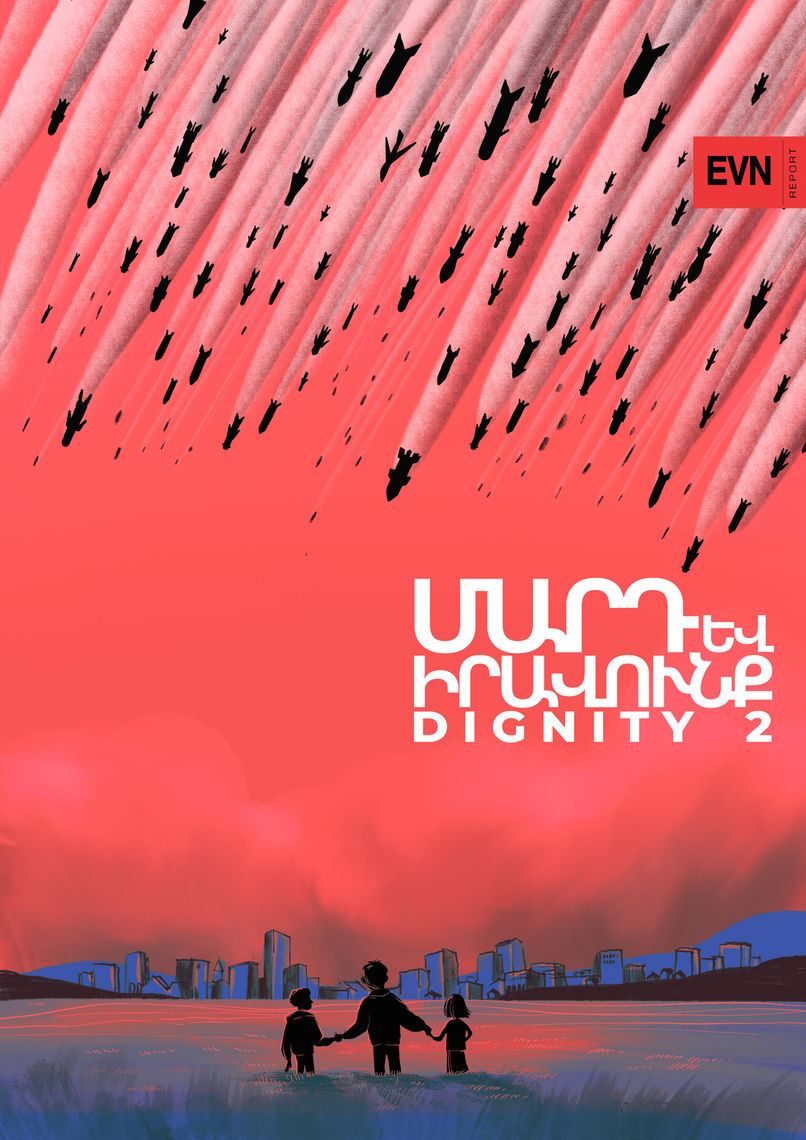
“In times of war, the law falls silent.”
Marcus Tullius Cicero
The imperative to protect human rights must be a daily endeavor for all - for those in positions of power and for ordinary citizens. Protecting human rights must include daily acts of courage and resilience, not only during times of war, but also in peacetime. EVN Report’s December 2020 issue “Dignity” is dedicated to those rights for all.
War Crimes and Possible Ways to Achieve Justice
By Ara Khzmalyan
Different international courts have jurisdiction over different areas of international law. Ara Khzmalyan explains the avenues available for demanding accountability for the war crimes committed against Artsakh.
Azerbaijan’s Anti-Armenian Policies Before the Artsakh War
By Lusine Sargsyan
Although the severity of war crimes committed by Azerbaijan and its disregard for international humanitarian law was unprecedented during the 2020 Artsakh War, it is a continuation of official Baku’s anti-Armenian policy stretching back over a century.
Azerbaijan’s War Crimes
By Hovhannes Nazaretyan
Numerous war crimes were committed during and after the 2020 Artsakh War. This article provides an overview and lists many of the most horrendous and brutal war crimes committed by Azerbaijani military against Armenian servicemen and civilians.
Hanging in the Air: When Even Your Displacement Is Unrecognized
By Gohar Abrahamyan
The thousands displaced by the 2020 Artsakh War are asking “What do you expect me to do?” But, no one has an answer for them.
Comments
David Karamian
1/11/2021, 4:58:25 PMIt's a great proposal. Somehow this needs to be presented to the Armenian Government so cation can be taken.
Mirijan M Kochian M Kochian
1/10/2021, 3:48:31 PMMy compliments to the publication of this article and the idea of enforcement to establish an independent commission are a 3rd party standard system. I am not familiar with the government organizational system how they can set up an independent commission. It would help if you had trained professionals who are subject matter experts. I am coming from Registrar and Notified body organization, and we certify companies to known standards. Therefore, for establishing an independent commission, is there a 3rd party involvement with valid accreditation?
Noel Gharibian Gharibian
1/9/2021, 7:44:18 PMsince Nov 9, I have gone through some stages of dealing with the grief that we became faced with. The anger portion has subsided and I have been thinking about some of the points presented in this article. I have read and heard numerous articles and interviews but of the few that were even worth paying attention to, none have suggested concrete steps for the future. I want to thank Dr Kopalyan for presenting the roadmap with this brilliant article which I hope all factions could agree is a first step in self evaluation after 25 years of wishful thinking.

